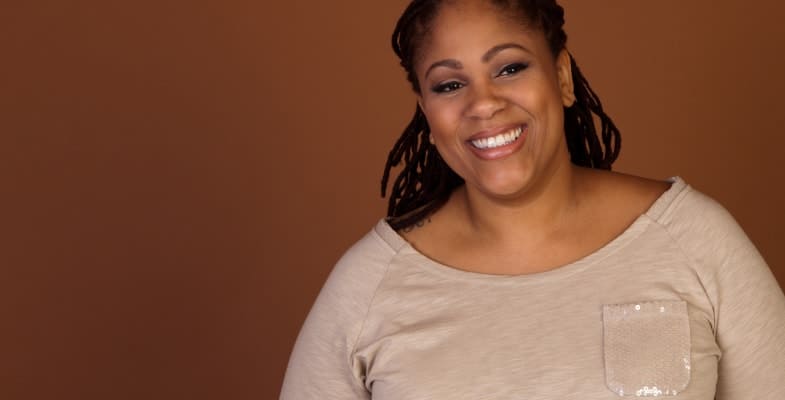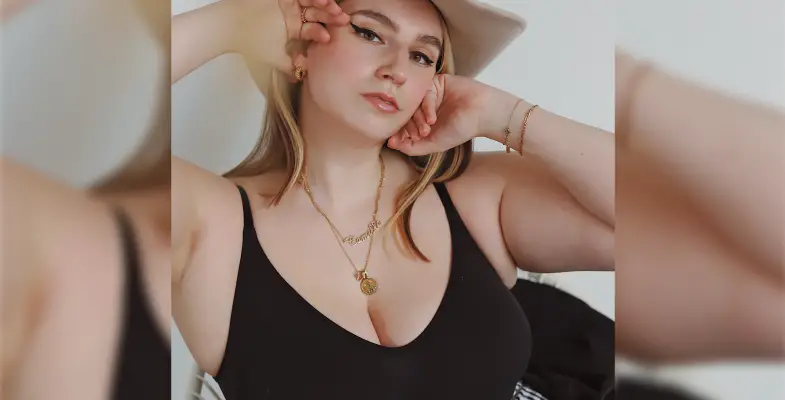The term Big Beautiful Woman (BBW) is a common inference that women today assign to themselves. It is intimately popular among plus-size women and interestingly also embraced by a wide spectrum of women who do not fall into a perfect size 2. So what does BBW really connote? Which woman fits the description? How does it ‘ring’ with the rest of society? The answer may surprise you!
For most women, BBW is a term used to assert against the current societal status quo of what beauty is. Time and time again, the stature of beauty has been depicted to be a tall, slender girl with high cheekbones, flat tummy, and blonde long hair, which is only representative of a miniature fraction of women around the globe. So what about the woman with flabby arms and short kinky hair? What about the woman with relatively large hips and butt? What of the one who is short and has a chubby wrinkled face? Are they not beautiful? Do they need to change in order to conform to the ideal of beauty presented?
Taken apart, the term BBW is premised on three distinct yet related ideologies – body size, the ideal of beauty, and gender. With each of these, there have been several oscillating debates on mainstream media in recent decades. Questions on what body size is ideal, what beauty looks like, and the status of women vis-a-vis men have been commonplace discussions. With all the strong emotions and subjectivity that marked most of these conversations, it follows there was great controversy and reactions when the term BBW was coined.
Often, the self-reference of being a Big Beautiful Woman, is in essence an assertion that big can be beautiful. It denotes an unapologetic declaration of pride, acceptance and confidence of one’s looks and seeks to contradict what societal norms have sought to uphold and praise. It is a statement that depicts a rebellion and despise of the status quo presented of what beauty should be. This is the context in which the term was coined and published – amidst relative unease and spurts of self-assertion and self-affirmation especially from women who were dubbed as fat or obese.
BBW is not a Tag, it’s an Identity
As opposed to being a general tag or name simply used to refer to a category of people, BBW is an identity. The power of identity is indisputable. It forms the parameters in which we conduct ourselves and how we receive and relate to the rest of the world. Identity helps give bearing on who we really are – what we believe of ourselves and what we would want others to believe of us. It consists of how we think and feel about our persons, our character, and our ability. For many such women, BBW is an expression that defines them and the lens through which they view and relate with the world. This identity allows them to interpret their actions and feelings; their ups and downs; their challenges, mishaps, passions, and aspirations in life. It constitutes a way of life and thought.

Surprisingly, there is more than just being ‘big and beautiful’ that a woman asserts when she associates herself with the term. Sentiments of victimization and passive aggression from society are some of the notions held by those who refer to themselves as BBW. The disquieting notions of non-tolerance and unacceptance of society of big people take center stage therefore mandating individuals who identify themselves as such to ‘assert’, so that their presence is graciously received or at the very least not bashed.
The term has been skeptically criticized as simply being a positive euphemism the goal being to increase ‘fat-people’ tolerance in society. However unlike the numerous euphemisms present this one rings with more ‘soul’. It’s not simply a tolerance that BBW are looking to achieve but rather societal respect and the freedom to do and choose as they please concerning their lives and health without the disapproval and infringement on their decisions.
Several variants of the term have ensued in the recent past to more closely identify various factions within the movement. BBBW (Big Black Beautiful Woman) and SSBBW (Supersized Big Beautiful Woman) were adopted to identify the black community and the extremely large-sized people in the movement respectively. Other terminologies such as ‘Feedies’ and rarely ‘Rubenesque’ have also been used as near synonyms to BBW.
A form of subculture and community closely resonates with this term. There is a belonging to a community of like- minded and like-looking people. There are several social networks and communities created for BBW such as Fatosphere and Peopleofsize.com. This is not to mean, any big woman who is not a part of these networks cannot claim to be BBW. However, those who strongly associate with the beliefs and sentiments that the term was originally premised on, can rightfully identify themselves as such. So here’s a brief history of what actually heralded the term BBW.
BBW History
The term was coined in 1979 by Carole Shaw during the heat of ‘fat activism’. A series of Fat Prides were staged in the US, the first being in 1967 at the New York Central Park. This ‘fat-in’ was attended by 500 fat crusaders who took to the burning of diet books and asserting that their rights were being violated. The genesis of this activism was the grisly treatment and inequality occasioned on fat people. This was evidenced by the discrimination in hiring, the then present motions of thin as the ideal body size, the radical campaign to diet and other ‘anti-fat’ health programs fervently published throughout all media outlets and the consistent judgement and prejudice experienced as they attended to their day to day activities.
Several organizations were founded in order to mitigate the harshness and indifference towards fat people. The popular approach was to educate and sensitize society to the needs and challenges faced by them. By highlighting the popular myths that caused people to misconstrue and lowly esteem those who were fat amongst them while simultaneously challenge society’s perception of the perfect size, the movement was hoped to elicit a more positive response and treatment to those who are big. Around this time frame the feminism movement was also gaining a lot of publicity. This added more voice to the fat activism crusade and injected an interesting factor- gender.
It was through feminism that there was an appreciation of how women were more scrutinized, judged, and lowly ranked in society in comparison to their male counterparts. An overweight female was criticized and treated with greater disdain than an overweight man. Similar Movements such as Health at Every Size sprang up. Numerous books and plays such as Figure 8 and Fat! So? By Mariylnn Wann were published. Several art & dance performances were utilized to agitate for fairness and equality of overweight people.
Fat activists argued against medical propositions that ‘overemphasized’ dieting. It was their belief that this promoted physical and psychological problems amongst fat people as ‘it was being forced down their throats.’ They propagated that being healthy was attainable at any size and that dieting was a tool being used to entrench societal beliefs that only thin was pretty. A lot of claw back followed. Medical personnel and researchers who had delved into the study and analysis of the claims and solutions presented by the activists were unrelenting in disproving the theory of ‘health at every size’. They aimed to prove the actual scientific benefits of weight loss as opposed to remaining overweight.
The movement from this point adopted divergent expressions and gradually fizzled out. There are however, some remnants of its ideologies and pursuits that continue to be propagated through other forums. A quick example would be the ongoing agitation that public means of transport to be made more accessible and ‘fat-friendly’. On the flip side, the term BBW gained a lot of fame and became a popular term which big women identified themselves by.
Is Being BBW similar to being Curvy, Full-Figured or Plus Size?
Ideally, the term was coined to refer to fat/big people and people considered obese. However, with the ever-blurring lines of what constitutes curvy as opposed to plus size or full-figured as distinguished from curvy – there has never been a general consensus of what size constitutes BBW. The difficulty of narrowing down to what constitutes and what does not constitute BBW is the level of subjectivity this matter is prone to. What size is big? Are there levels of being big? Who defines it? This makes an ‘authoritative’ answer nearly impossible to arrive at.
BBW supersedes the dress size you wear or your bra cup size. It definitely does not look to delineate how many inches your waistline should be or whether or not you should have balanced proportions on both your upper and lower body. It becomes apparent that a woman can be plus-size, curvy, or full-figured and still consider themselves as big and beautiful.
Instead, great emphasis has been placed on the ideology of being BBW which does not speak to size alone, but a mentality and outlook on life. Most women who identified themselves in this manner, stood against all anti-fat campaigns as depicted in dieting and general weight loss programs. However, times have changed and there has grown a generation not aware of the roots of this terminology, its values and principles. This has allowed for the superficial and rampant use of the term in various fashions.
BBW: Body Image, Health and Beauty
When it comes to health, a large majority of women who are overweight have been cautioned on the effects of being overweight. It may have been through a family doctor, a publication, an advertisement and even if we do not like to admit it, our very own consciences. No matter our size, it is generally agreed that being healthy is a fundamental tenet to enjoying life.
Unfortunately, several BBW suffer from obesity and various eating disorders such as bulimia and binge-eating. In some instances there is a lot of emotional and psychological torment experienced due to the negative outlook of society of their ‘overly’ big appearances. A majority of the cases go unreported and unaddressed due to the stigma associated with being ‘big’. However if you fall into this category, this should not deter you from seeking requisite help. Looking at the grander scheme of things, beauty, self-love and confidence is incomplete and lacking without you maintaining a healthy lifestyle.
Make the necessary adjustments. You can cut off the excess calories and unwanted fats from your diet for a start. Perhaps join an accountability group to get the requisite support from those on the same journey with you. Think positively and affectionately towards yourself. Don’t self-hate or self-destruct because people judge you based on how you look as opposed to who you really are. Talk to your doctor and see what other changes you may have to make. Be clear about the end goal and want it for yourself. You deserve to live a whole-rounded life. Don’t just assert you are beautiful – be beautiful by taking care of yourself.
Beauty is diverse. It comes in all shapes and sizes, colors and hues. The standards of what is considered beautiful may constantly change with the dominant societal norms. Despite this, is generally agreed upon is that a woman’s beauty does not solely comprise of her physical appearance. Beauty is something more than size or weight. It’s more than sexual appeal; it’s more than just a smile. It denotes presence… the presence of a whole being.
Final Thoughts
Being big does not degrade your worth and relevance as a person. True beauty is not in the fit of your dress or the size of your bust or hips – it is something that you exude from inside. It’s in the aura you carry, the joy you bring, the care with which you nurture and help, the confidence you exude, and the quality of person you are to yourself and to others. Regardless of how mean society may be to those who don’t fit its stereotype, being a big beautiful woman is exclusively a function of your personal choice and will. You can go through life healthy, happy, and confident if you choose to. So choose to.




